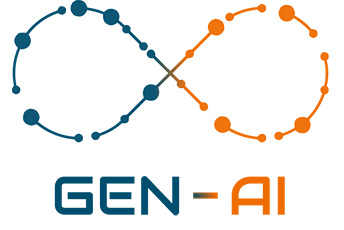Health (Hospitals, Clinics, Insurance, and Telemedicine) with MONAI
With additional integration of MONAI and fine-tuning for stroke and other disease diagnoses
Scenario:
In the health sector, critical medical images and documents are managed, such as radiological reports (CT scans, MRIs), scanned medical records, and prescriptions. Moreover, the ability to make accurate diagnoses, as in the case of a Stroke (CVA), is vital. With the integration of MONAI and fine-tuning models for diagnosing CVAs and other diseases, the capacity of the semantic extractor combined with OCR + Computer Vision + LLM is enhanced, providing advanced medical diagnoses.
How the Integration Works in the Health Sector
- Multimodal Interaction with the Chatbot:
– Physicians can interact with the multimodal chatbot in various ways:
– Text: Making clinical inquiries or requesting analyses of medical images.
– Images: Uploading radiological reports, such as CT scans or MRIs.
– Audio: Providing recordings of medical consultations or dictations.
- Processing Medical Images with Fine-Tuning in MONAI:
– OCR: The chatbot automatically extracts text from scanned medical reports or prescriptions using OCR.
– Computer Vision: Analyzes complex medical images (CT scans, MRIs) to identify anatomical structures and possible anomalies.
– MONAI and Fine-Tuning for CVA Diagnoses: This module is specifically integrated with MONAI and has been fine-tuned with models for diagnosing CVAs and other relevant diseases. The system analyzes medical images to detect clinical signs of these pathologies and offers automated diagnoses based on the fine-tuned model.
– LLM: Finally, the LLM interprets the results of the medical analyses, extracting and structuring the relevant information coherently, facilitating clinical understanding.
- Advanced Diagnostic Response:
– Text: The chatbot can return a detailed analysis of the radiological images, identifying signs of CVA or anomalies related to other diseases.
– Images: The results may include annotated images, visually highlighting critical areas (brain lesions, clots, etc.).
– Audio: If the physician is interacting in audio format, they can receive verbalized clinical analysis, optimizing accessibility.
Advantages of Integration with MONAI for CVA and Other Disease Diagnoses
- Automated and Accurate Medical Diagnoses:
– The integration of MONAI with specific fine-tuning for CVAs and other pathologies allows for more accurate and automated assessments of medical images. This helps physicians make more informed and rapid decisions.
– Diagnoses based on models specifically trained for these diseases increase the reliability of the system.
- Improvement in Patient Care:
– By reducing the time to analyze images and improving diagnostic accuracy, patients receive faster and more effective treatment, especially in critical situations like a CVA, where time is essential.
- Automation in High-Demand Environments:
– In hospitals or clinics with high demand for medical image analysis, this system enables the rapid processing of large volumes of information, facilitating immediate diagnoses and reducing the workload on radiologists and neurologists.
- Optimization of Clinical Resources:
– The multimodal chatbot’s ability to interact with images and text, combined with advanced MONAI analysis, optimizes physicians’ time, allowing them to focus on critical decisions while the system performs initial image analyses.
- Reduction of Human Errors:
– The system is optimized to detect subtle signals of CVAs and other diseases that may be overlooked in a quick manual review. This reduces the likelihood of diagnostic errors and improves clinical outcomes.
- Accessibility for Telemedicine:
– Physicians can interact with the multimodal chatbot and receive diagnoses from anywhere, which is especially useful in telemedicine. Medical images can be sent from remote clinics and automatically analyzed.
Example of Workflow in a Multimodal Chatbot for Health with MONAI
– Case 1: A physician uploads an image of a brain CT for a patient suspected of having a CVA.
– Chatbot: “Analyzing the CT and evaluating possible signs of CVA…”
– Chatbot Response: “A lesion has been detected in the left frontal lobe, likely indicative of ischemic stroke.”
– Case 2: The physician receives an audio file with a verbal summary of the radiological findings.
– Chatbot: “Analyzing the recording…”
– Chatbot Response: “The MRI report suggests an anomaly in the central nervous system, possibly indicative of multiple sclerosis.”
– Case 3: A patient sends an image of a medical prescription.
– Chatbot: “Processing the medical prescription…”
– Chatbot Response: “A medication related to the prevention of CVA has been detected: Clopidogrel 75mg, to be taken once daily.”
This specific integration of MONAI and the fine-tuning of CVA models within the health module elevates the diagnostic capacity of the system, enabling advanced and precise medical analyses, optimizing response times for physicians, and improving patient care in critical clinical contexts.


